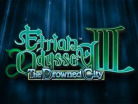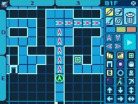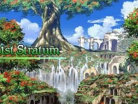- CLASSIC MAGAZINES
- REVIEW CREW
A show recapping what critics thought back
when classic games first came out! - NEXT GENERATION'S BEST & WORST
From the worst 1-star reviews to the best
5-stars can offer, this is Next Generation! - NINTENDO POWER (ARCHIVE)
Experience a variety of shows looking at the
often baffling history of Nintendo Power! - MAGAZINE RETROSPECTIVE
We're looking at the absolutely true history of
some of the most iconic game magazines ever! - SUPER PLAY'S TOP 600
The longest and most ambitious Super NES
countdown on the internet! - THEY SAID WHAT?
Debunking predictions and gossip found
in classic video game magazines! - NEXT GENERATION UNCOVERED
Cyril is back in this spin-off series, featuring the
cover critic review the art of Next Generation! - HARDCORE GAMER MAGAZING (PDF ISSUES)
Download all 36 issues of Hardcore Gamer
Magazine and relive the fun in PDF form!
- REVIEW CREW
- ELECTRONIC GAMING MONTHLY
- ELECTRONIC GAMING MONTHLY RANKS
From Mario to Sonic to Street Fighter, EGM
ranks classic game franchises and consoles! - ELECTRONIC GAMING MONTHLY BEST & WORST
Counting down EGM’s best and worst reviews
going year by year, from 1989 – 2009! - ELECTRONIC GAMING BEST & WORST AWARDS
11-part video series chronicling the ups and
downs of EGM’s Best & Worst Awards!
- ELECTRONIC GAMING MONTHLY RANKS
- GAME HISTORY
- GAME OVER: STORY BREAKDOWNS
Long-running series breaking down game
stories and analyzing their endings! - A BRIEF HISTORY OF GAMING w/ [NAME HERE]
Real history presented in a fun and pithy
format from a variety of game historians! - THE BLACK SHEEP
A series looking back at the black sheep
entries in popular game franchises! - INSTANT EXPERT
Everything you could possibly want to know
about a wide variety of gaming topics! - FREEZE FRAME
When something familiar happens in the games
industry, we're there to take a picture! - I'VE GOT YOUR NUMBER
Learn real video game history through a series
of number-themed episodes, starting at zero! - GREAT MOMENTS IN BAD ACTING
A joyous celebration of some of gaming's
absolute worst voice acting!
- GAME OVER: STORY BREAKDOWNS
- POPULAR SHOWS
- DG NEWS w/ LORNE RISELEY
Newsman Lorne Riseley hosts a regular
series looking at the hottest gaming news! - REVIEW REWIND
Cyril replays a game he reviewed 10+ years
ago to see if he got it right or wrong! - ON-RUNNING FEUDS
Defunct Games' longest-running show, with
editorials, observations and other fun oddities! - DEFUNCT GAMES QUIZ (ARCHIVE)
From online quizzes to game shows, we're
putting your video game knowledge to the test!- QUIZ: ONLINE PASS
Take a weekly quiz to see how well you know
the news and current gaming events! - QUIZ: KNOW THE GAME
One-on-one quiz show where contestants
find out if they actually know classic games! - QUIZ: THE LEADERBOARD
Can you guess the game based on the classic
review? Find out with The Leaderboard!
- QUIZ: ONLINE PASS
- DEFUNCT GAMES VS.
Cyril and the Defunct Games staff isn't afraid
to choose their favorite games and more! - CYRIL READS WORLDS OF POWER
Defunct Games recreates classic game
novelizations through the audio book format!
- DG NEWS w/ LORNE RISELEY
- COMEDY
- GAME EXPECTANCY
How long will your favorite hero live? We crunch
the numbers in this series about dying! - VIDEO GAME ADVICE
Famous game characters answer real personal
advice questions with a humorous slant! - FAKE GAMES: GUERILLA SCRAPBOOK
A long-running series about fake games and
the people who love them (covers included)! - WORST GAME EVER
A contest that attempts to create the worst
video game ever made, complete with covers! - LEVEL 1 STORIES
Literature based on the first stages of some
of your favorite classic video games! - THE COVER CRITIC
One of Defunct Games' earliest shows, Cover
Critic digs up some of the worst box art ever! - COMMERCIAL BREAK
Take a trip through some of the best and
worst video game advertisements of all time! - COMIC BOOK MODS
You've never seen comics like this before.
A curious mix of rewritten video game comics!
- GAME EXPECTANCY
- SERIES ARCHIVE
- NINTENDO SWITCH ONLINE ARCHIVE
A regularly-updated list of every Nintendo
Switch Online release, plus links to review! - PLAYSTATION PLUS CLASSIC ARCHIVE
A comprehensive list of every PlayStation
Plus classic release, including links! - RETRO-BIT PUBLISHING ARCHIVE
A regularly-updated list of every Retro-Bit
game released! - REVIEW MARATHONS w/ ADAM WALLACE
Join critic Adam Wallace as he takes us on a
classic review marathon with different themes!- DEFUNCT GAMES GOLF CLUB
Adam Wallace takes to the links to slice his way
through 72 classic golf game reviews! - 007 IN PIXELS
Adam Wallace takes on the world's greatest spy
as he reviews 15 weeks of James Bond games! - A SALUTE TO VAMPIRES
Adam Wallace is sinking his teeth into a series
covering Castlevania, BloodRayne and more! - CAPCOM'S CURSE
Adam Wallace is celebrating 13 days of Halloween
with a line-up of Capcom's scariest games! - THE FALL OF SUPERMAN
Adam Wallace is a man of steel for playing
some of the absolute worst Superman games! - THE 31 GAMES OF HALLOWEEN
Adam Wallace spends every day of October afraid
as he reviews some of the scariest games ever! - 12 WEEKS OF STAR TREK
Adam Wallace boldly goes where no critic has
gone before in this Star Trek marathon!
- DEFUNCT GAMES GOLF CLUB
- DAYS OF CHRISTMAS (ARCHIVE)
Annual holiday series with themed-episodes
that date all the way back to 2001!- 2015: 30 Ridiculous Retro Rumors
- 2014: 29 Magazines of Christmas
- 2013: 29 Questionable Power-Ups of Christmas
- 2012: 34 Theme Songs of Christmas
- 2011: 32 Game Endings of Christmas
- 2010: 31 Bonus Levels of Christmas
- 2009: 30 Genres of Christmas
- 2008: 29 Controls of Christmas
- 2007: 34 Cliches of Christmas
- 2006: 33 Consoles of Christmas
- 2005: 32 Articles of Christmas
- 2004: 31 Websites of Christmas
- 2003: 29 Issues of Christmas
- 2002: 28 Years of Christmas
- 2001: 33 Days of Christmas
- NINTENDO SWITCH ONLINE ARCHIVE
- REVIEW ARCHIVE
- FULL ARCHIVE
Etrian Odyssey III: The Drowned City
Are you the type of gamer who finds themselves increasingly turned off by the dumbing down of modern role-playing games? Were you disappointed by easy accessibility of recent Final Fantasy and Fallout games? Do you wish today's crop of adventure games were more in line with what we saw in the 1980s? If you answered yes to any of these questions, then you should already be playing Etrian Odyssey III: The Drowned City, the exciting new adventure game for the Nintendo DS.
Atlus is known for their niche titles, so it doesn't surprise me that Etrian Odyssey III is one of the most challenging RPGs I've played in years. At its core this is a standard turn-based adventure in which players are tasked with exploring dungeons for hidden treasure and nasty enemies. But this game has a twist. This is not just another Final Fantasy rip-off; it's a game that requires its players to literally map out each dungeon in order to succeed. These elements, along with the strong gameplay, make The Drowned City a worthy successor to 2008's Heroes of Lagaard.
At the start we're told about the Yggdrasil Labyrinth, an enormous maze that is just outside of the port town of Armoroad. Over the years many adventurers came to tackle the labyrinth, but so far none have succeeded. That's where you come in. After creating a bunch of characters (based on ten different jobs, such as a prince, gladiator, buccaneer, ninja, monk, wildling, etc.), it's up to you to search around the dungeons and take extensive notes.
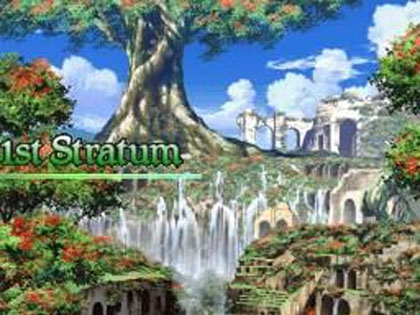
Unlike most RPGs, Etrian Odyssey III requires its players to draw the map and fill it in with useful information. No matter how good your memory is, charting everything down is the only way you're going to get through the absolutely massive levels. Thankfully the game offers plenty of helpful icons, including direction markers, a tent icon to show where it's safe to rest, where secret shortcuts are and much, much more. The game will actually reward adventurers who are anal retentive about notations.
For gamers of a certain age, having to make dungeon maps will bring back memories. It wasn't that long ago that buying a role-playing game meant that you had to pull out some graph paper and map everything out. Etrian Odyssey III takes that idea to a whole new level. Thanks to the Nintendo DS's touch screen, players have a much easier (and less messy) way to chart the maps. They can add colors and icons, all in hopes of making their way to the end of this massive game.
Unfortunately all this comes at a price. Because this game bucks most of the modern advancements, players are left with one of the most challenging role-playing games I've played in years. The learning curve is steep, to the point where you'll probably die a few times before you get the hang of things. My impulse was to explore as far into the dungeon as I can, but I did that at my own peril. All it takes is a pair of simple enemies to kill half my team. And if I'm too far from the exit, I'll never be able to get back to safety.

The turn-based combat isn't bad, but it's hardly inspired. Each of the five characters in the party plot their moves at once, a mechanic that can spell trouble if the enemies decide to team up against one person. Each character has a list of traditional RPG moves, from a normal attack to using one of the skills. The idea is to have a well-diversified party, one that includes fighters, magicians and somebody who can heal any injury thrown their way. Instead of showing your characters on the same screen as the enemy, the game only displays what is immediately in front of you. In that sense, Etrian Odyssey III is a lot like the original Phantasy Star or Dragon Quest.
Speaking of Phantasy Star, you explore the game's 25 dungeons from a first-person perspective. You push up to move forward and back to go backwards, left and right turn the player a full 90 degrees. Even though the perspective is familiar, the movement in Etrian Odyssey III is not as sophisticated as a regular first-person shooter. Oddly enough, this doesn't feel as constrictive as I worried going in. The player's limited movement helps keep the mapping orderly, which is a big deal the further in one goes.
For the most part I'm a big fan of what Atlus is trying to do here, but the old school style does offer a few major problems. For one thing, the story is incredibly simple. Oh sure, you'll pick up quests along the way that will help fill in some of the narrative, but don't expect anything too expansive from this game. There are no impressive cinemas to watch or memorable characters to meet. There are townspeople outside of the labyrinth, however they rarely have anything earth shattering to tell you. Outside of giving you the set-up, there really isn't a whole lot of incentive to move forward.
I mentioned the steep learning curve, but I didn't mention anything about the hours of grinding I had to do in order to make my party competitive. I was shocked by how quickly I died my first time in the dungeon. I've put a lot of time into RPGs over the last few years and rarely do I feel like an inept gamer. Luckily I was able to upgrade different components of my character, but doing that was a slow process. The steep difficulty and learning curve will no doubt push a lot of gamers away. And that's a shame, because given enough time you'll discover that Etrian Odyssey III offers some compelling ideas.

It's worth noting that the charting itself can get a little repetitive. It's one thing to explore the dungeon, but players will need to be meticulous if they want to find every nook and cranny. This means that after each step you should look around, searching for hidden passages and treasure. This is made even harder by FOEs, extremely difficult enemies that walk around the level looking for trouble. The game is full of sudden encounters, which can really slow down your map-making progress.
I also found that the dungeon environment was extremely depressing. It's not that the story or visuals are dreary, not at all. In fact, a lot of the dungeon is bright and colorful. The problem I ran into was how similar everything started to look after a while. And it's not just the visuals, it's the constant back tracking that must be done. Eventually you'll earn magical spells and special items that rectify this problem, but there's something about being stuck in a labyrinth for hours on end that brings my spirits down.
Some of my concerns about the game subsided the further I got. Not only can you explore the underground dungeons, but there's also a boat that can be upgraded. The more you work on the boat, the further out into the ocean you can go. Here you search for pirate and plunder treasure, a nice change of pace to the dungeon crawling you're doing the rest of the time. Best of all, on the open sea there are no surprise encounters, so you can just chart the world without worrying about being attacked.
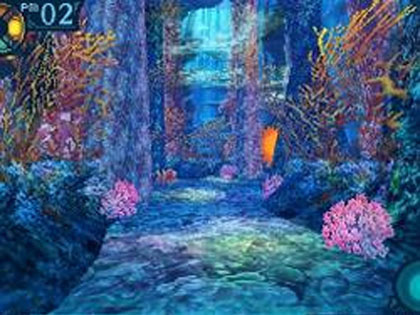
Even after spending more than thirty hours with the game, I still feel like there's much I didn't see or do. The instruction manual talks about multiplayer options, but I had a hard time finding friends who would get excited about mapping out dungeons. The game is overflowing with enemies to discover and attacks to master, some of which took more time than I was willing to put in. Not that I'm complaining. There's definitely a lot of content to be had here and anybody who enjoys making maps will have no problem getting lost in this world.
In a world full of me-too role-playing games, I'm excited to find one that breaks the mold. Its old school sensibilities make it feel removed from the likes of Final Fantasy or Persona. I wish there was more of a story to tie everything together, but I had a good time mapping the dozens of dungeons and exploring the high seas. Etrian Odyssey III isn't for everybody, but this is a must-own if you've ever had a fascination with cartography.
HOME |
CONTACT |
NOW HIRING |
WHAT IS DEFUNCT GAMES? |
NINTENDO SWITCH ONLINE |
RETRO-BIT PUBLISHING
Retro-Bit |
Switch Planet |
The Halcyon Show |
Same Name, Different Game |
Dragnix |
Press the Buttons
Game Zone Online | Hardcore Gamer | The Dreamcast Junkyard | Video Game Blogger
Dr Strife | Games For Lunch | Mondo Cool Cast | Boxed Pixels | Sega CD Universe | Gaming Trend
Game Zone Online | Hardcore Gamer | The Dreamcast Junkyard | Video Game Blogger
Dr Strife | Games For Lunch | Mondo Cool Cast | Boxed Pixels | Sega CD Universe | Gaming Trend
Copyright © 2001-2025 Defunct Games
All rights reserved. All trademarks are properties of their respective owners.
All rights reserved. All trademarks are properties of their respective owners.







